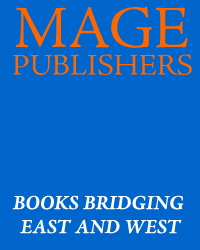
A film buff remembers
A book every movie fan should buy
September 3, 2004
iranian.com
When I first met Cyrus Ghani at a party in the mid-1960s in Tehran,
I was amazed by his fantastic memory. He remembered almost every
details, including the names of actors and technicians of all
the films I mentioned. As a former film critic, I was flabbergasted.
Ghani certainly had a vast cinematographic culture and remembered
all
the movies he had seen since his childhood. He was a real
and serious film buff.
Our love of cinema established the basis
of our friendship. Over the years I discovered his many other
interests: history of and foreign books about Iran; Iranian family
trees; international and corporate law; tennis; and so on.
Nevertheless cinema remained our main link.
Cinema enthusiasts fall grosso-modo into two categories.
There are those who consider film as the most accomplished form
of entertainment.
They constitute the bulk of moviegoers and their reactions evaluated
through Box-Office returns, ensure the success or failure of feature
presentations. They usually demand a well constructed story line
and solid or glamourous actors. Some prefer plausible if not realistic
anecdotes, others fairy tales and assorted fantasies. Some like
action, others
romance and/or tearjerkers.
In general, this kind of audience
identify with the characters played by the actors and tend to imitate
them in real life. In the 1930s, for instance, Douglas Fairbanks
became an idol and one would find the Douglas
Mustache in many corners of the world. Women would adopt
the hair style of famous stars. And so on.
A more limited number of film buffs regard cinema as the highest
form of all arts . They generally neglect the story and relish
in the director’s style which transmit hidden
meaning. To them actors and other technicians are just
tools in
the hands of the film maker, like colors and brushes used by the
painter. What is important is the end-result. This
category tend to patronize art theaters.
In practice the division of movie-goers is far from being so
categorical . People might enjoy both commercial and artistic productions
. Ghani is a perfect example of such an eclectic movie fan, as
one can infer from his book My
Favorite Films which
comprise commercial successes as well as esoteric works .
 This
brings me
to his selection of almost seven hundred titles. It is easy to
take issue with him about it, especially that he distributes them
under three titles: The greatest, the great and the near-great.
Indeed, why relegate Kazan’s “Viva Zapata!” in
the “near-great” and put Wise's “The Day the
Earth Stood Still “ among the “great”? Why mention
Golestan’s “Mysteries of The Treasure Phantom Valley “ and
not his “The Brick and the Mirror”? This
brings me
to his selection of almost seven hundred titles. It is easy to
take issue with him about it, especially that he distributes them
under three titles: The greatest, the great and the near-great.
Indeed, why relegate Kazan’s “Viva Zapata!” in
the “near-great” and put Wise's “The Day the
Earth Stood Still “ among the “great”? Why mention
Golestan’s “Mysteries of The Treasure Phantom Valley “ and
not his “The Brick and the Mirror”?
As a former member
of the editorial board of Cahiers du Cinema (1954-1965)
, I was surprised to find Mizoguchi’s “Ugetsu Monogatari” among
the “near-great” when in the 1960s in Paris we saluted
it as a “masterpiece” of world cinema. Indeed we considered
Mizogushi far superior to Kurosowa whose “Seven Samurai” is
listed among the “greatests”!
But, as Ghani himself warns in his introduction, his
selection is purely personal. He also reveals that he is “principally
influenced by the script , the acting and the direction”.
Judging by the length of the story description in each entry,
it seems that he considers the scenario as essential. I beg to
disagree: my friends in the 1950s “Cahiers du Cinema” highlighted
the role of the director as the author of the film. Indeed, the
film maker’s wand can transform into a work
of art the most commonplace and artificial story as for example
in “Casablanca”
(Michael Curtiz) or “Party Girl” (Nicholas Ray).
 Having said that, I must commend the author for
the accuracy and the wealth of information he displays. His is
a book
every movie fan should buy. In my opinion Ghani should have sub-titled
it: “A Film Buff Remembers... ” or “Memories
of a Cinema Enthusiast”. Obviously this is not the kind
of book that one can read from page one to the end. It rather
falls in the category of reference books or specialized dictionaries
one should keep in one’s library to consult from time to
time. Having said that, I must commend the author for
the accuracy and the wealth of information he displays. His is
a book
every movie fan should buy. In my opinion Ghani should have sub-titled
it: “A Film Buff Remembers... ” or “Memories
of a Cinema Enthusiast”. Obviously this is not the kind
of book that one can read from page one to the end. It rather
falls in the category of reference books or specialized dictionaries
one should keep in one’s library to consult from time to
time.
.................... Say
goodbye to spam!
Author
Fereydoun Hoveyda was Iran's ambassador to the United Nations
from 1971 to 1978. He is the author of The
Broken Crescent: The Threat of Militant Islamic Fundamentalism (2002), The
Shah
and the
Ayatollah, Iranian Mythology
and Islamic Revolution (2003). He is a Senior Fellow
at the National Committee on American Foreign Policy and
a lecturer
at Benador Associates.
To learn
more about the Hoveydas, visit their web site >>> Features
*
*
|